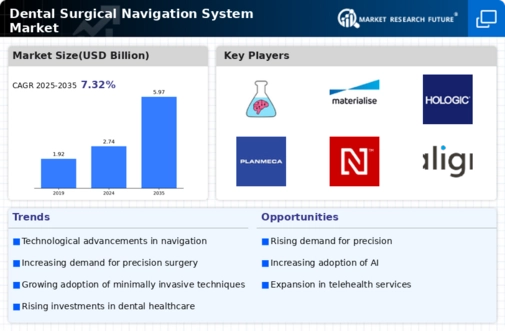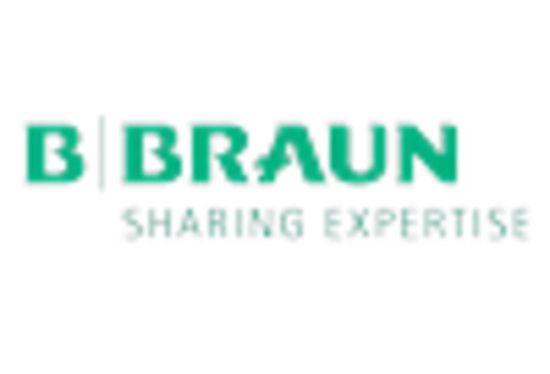Growing Focus on Patient Safety and Outcomes
Patient safety remains a paramount concern within the Dental Surgical Navigation System Market. As healthcare providers strive to improve surgical outcomes, the adoption of navigation systems that enhance precision and reduce errors is becoming increasingly prevalent. Data suggests that the implementation of these systems can lead to a significant decrease in surgical complications, which is a critical factor for both patients and practitioners. The emphasis on patient safety is driving investments in advanced navigation technologies, as dental practices seek to differentiate themselves by offering superior care. This focus on outcomes is likely to sustain the growth trajectory of the Dental Surgical Navigation System Market.
Increased Demand for Minimally Invasive Procedures
The trend towards minimally invasive procedures is significantly influencing the Dental Surgical Navigation System Market. Patients are increasingly seeking treatments that offer reduced recovery times and less postoperative discomfort. As a result, dental professionals are adopting navigation systems that facilitate these types of procedures. The market data indicates that minimally invasive dental surgeries are expected to account for a substantial portion of the overall dental surgery market, with navigation systems playing a crucial role in their success. This shift towards less invasive techniques is likely to propel the demand for advanced navigation systems, thereby contributing to the growth of the Dental Surgical Navigation System Market.
Rising Geriatric Population and Dental Health Needs
The increasing geriatric population is a key driver of the Dental Surgical Navigation System Market. As individuals age, they often experience a decline in dental health, necessitating more complex surgical interventions. This demographic shift is prompting dental professionals to seek advanced navigation systems that can assist in performing intricate procedures with higher accuracy. Market analysis indicates that the demand for dental surgeries among older adults is expected to rise, thereby creating a favorable environment for the growth of navigation systems. The intersection of an aging population and the need for enhanced surgical precision is likely to bolster the Dental Surgical Navigation System Market.
Technological Advancements in Dental Surgical Navigation
The Dental Surgical Navigation System Market is experiencing a surge in technological advancements that enhance surgical precision and outcomes. Innovations such as augmented reality and advanced imaging techniques are being integrated into navigation systems, allowing for real-time tracking of instruments during procedures. This integration not only improves the accuracy of dental surgeries but also reduces the risk of complications. According to recent data, the market for dental navigation systems is projected to grow at a compound annual growth rate of approximately 10% over the next five years. As these technologies become more accessible, dental professionals are increasingly adopting them, thereby driving the growth of the Dental Surgical Navigation System Market.
Expansion of Dental Practices and Technological Integration
The expansion of dental practices, particularly in emerging markets, is contributing to the growth of the Dental Surgical Navigation System Market. As dental clinics expand their services, there is a growing need for advanced technologies that can improve operational efficiency and patient care. The integration of navigation systems into dental practices is seen as a strategic move to enhance service offerings. Market data suggests that the adoption of these systems is on the rise, particularly in regions where dental care is becoming more accessible. This trend indicates a robust potential for growth within the Dental Surgical Navigation System Market as practices continue to evolve and embrace technological advancements.

















Leave a Comment